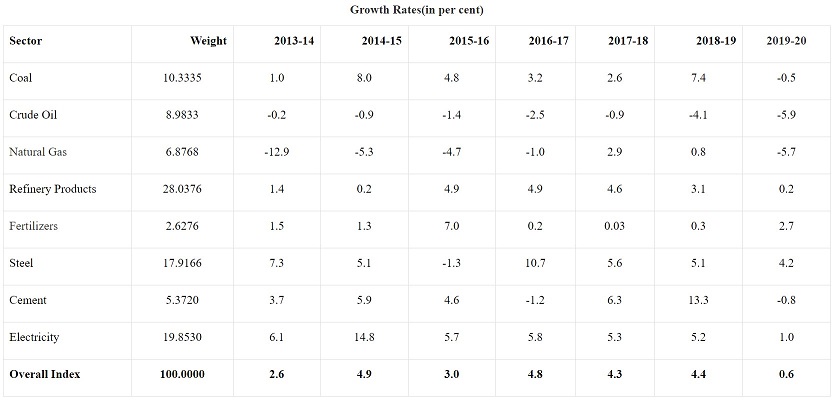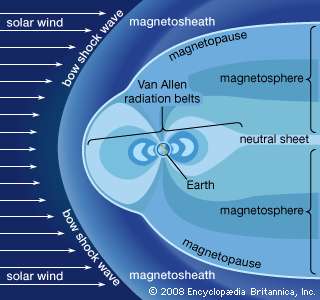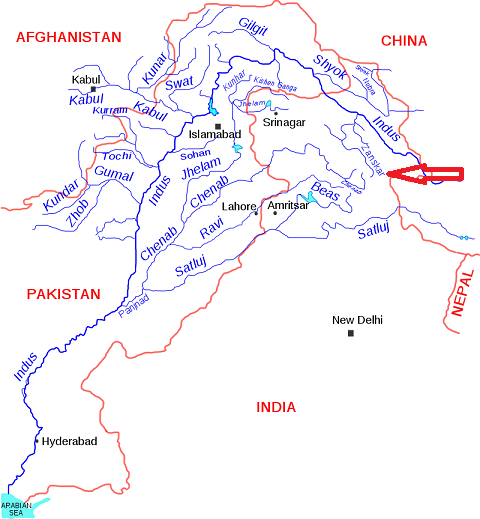Contents
- National Testing Agency (NTA) extends application dates
- Index of Eight Core Industries
- Electric field structure in Earth’s Magnetosphere
- History of river erosion in Ladakh Himalayas
- Ayush Sector Has Immense Potential
- Tribute to Raja Ravi Varma on his 172nd Birth Anniversary
NATIONAL TESTING AGENCY (NTA) EXTENDS APPLICATION DATES
Focus: GS-II Governance
Why in news?
In view of the hardships faced by the parents and the students due to COVID-19 epidemic, the National Testing Agency has further extended/ revised the dates of submission of Online Application Forms for various Examinations.
NTA understands the importance of academic calendar and schedule, but it is equally concerned about the wellbeing of every citizen, including students.
National Testing Agency (NTA)
- National Testing Agency (NTA) is an Indian government agency that has been approved by the Union Council of Ministers.
- It was established in November 2017.
- NTA was established to conduct entrance examinations for higher educational institutions, hence it is mandated with creating an exam system that is scientific and at par with global standards.
- NTA is responsible for conducting the Joint Entrance Examination – Main (JEE Main), National Eligibility cum Entrance Test-Undergraduate (NEET UG), National Eligibility Test (NET), Common Management Admission Test (CMAT) and Graduate Pharmacy Aptitude Test (GPAT).
- The NTA will be chaired by an eminent educationist who will be appointed by the Ministry of Human Resource Development.
- The CEO of NTA will be the Director-General to be appointed by the Government. There will also be a Board of Governors comprising members from user institutions.
- NTA is registered under the Indian Societies Registration Act, 1860.
Functions of NTA
- Identifying partner institutions with sufficient infrastructure from among the existing schools and higher educational institutions which would enable the conduct of online examinations without hampering their academic routine.
- Creating a question bank for all subjects using the latest techniques.
- Establishing a strong Research & Development culture and also a pool of experts in various aspects of testing.
- Helping individual universities and colleges in the domain of testing and providing training and advisory services to institutions.
- Providing quality testing services to Indian academic institutions.
- Developing a modern culture of testing in India by means of Indian and global expertise. Also, collaborating with international organisations such as Educational Testing Service (ETS) to attain this.
- Undertaking any other exam that it is asked by the central/state government departments/ministries to take up.
- Performing reforms, as well as training of school boards and other bodies wherein the standard of testing, must be on par with the entrance examinations.
NTA is currently Responsible for Conducting:
- Joint Entrance Examination – Main (JEE Main)
- National Eligibility cum Entrance Test-Undergraduate (NEET UG)
- National Eligibility Test (NET)
- Common Management Admission Test (CMAT)
- Graduate Pharmacy Aptitude Test (GPAT).
INDEX OF EIGHT CORE INDUSTRIES
Focus: GS-III Industry and Infrastructure, Indian Economy
Why in news?
The summary of the Index of Eight Core Industries (base: 2011-12) was published on 30th April 2020.
The Eight Core Industries comprise 40.27 per cent of the weight of items included in the Index of Industrial Production (IIP).
Its cumulative growth during April to March, 2019-20 was 0.6 per cent.
Performance of Eight Core Industries: Growth Rates (in percent)

Index of Industrial Production (IIP)
- The Index of Industrial Production (IIP) is an index that shows the growth rates in different industry groups of the economy in a fixed period of time.
- It is compiled and published monthly by the Central Statistical Organization (CSO), Ministry of Statistics and Programme Implementation.
- IIP is a composite indicator that measures the growth rate of industry groups classified under:
- Broad sectors, namely, Mining, Manufacturing, and Electricity.
- Use-based sectors, namely Basic Goods, Capital Goods, and Intermediate Goods
The Eight Core industries of IIP are:
- Coal
- Crude Oil
- Natural Gas
- Refinery Products
- Fertilizers
- Steel
- Cement
- Electricity.

ELECTRIC FIELD STRUCTURE IN EARTH’S MAGNETOSPHERE
Focus: GS-III Science and Technology
Why in news?
Scientists have developed a generalized one-dimensional fluid simulation code capable of studying a wide spectrum of coherent electric field structures in near-earth plasma environment or earth’s magnetosphere which can be useful in planning of future space missions.
Significance
- The Earth’s magnetosphere is a vast region which has a finite number of satellites hurtling through this realm. Hence, the in-situ observations are finite and discrete.
- The morphology of the plasma processes around the satellite can be understood quite well.
- However, when they leave the observational domain of one satellite to enter into another, a vast blind arena is created.
- How the morphology of these processes changes over space and time can be ideally deciphered only through computer simulations.
- Almost 99% of matter in the universe is in the form of plasma and Earth’s magnetosphere, too, contains this material and the plasma processes have the ability to hamper the working of a number of satellites that have been placed in orbit in the magnetospheric region.
Usefulness of this simulation
- Help with the well-being of expensive satellites.
- Help with the academic understanding of this region which is quite essential to comprehend the cosmos in its entirety.
- Advance the knowledge of plasma waves, instabilities, and coherent effects associated with wave-particle interactions that are useful in planning of future space missions.
- It can also lead to precisely controlled fusion laboratory experiments for ever-expanding energy needs of humanity.
Magnetosphere
- A magnetosphere is a region of space surrounding an astronomical object in which charged particles are affected by that object’s magnetic field.
- It is created by a star or planet with an active interior dynamo.
- In the space environment close to a planetary body, the magnetic field resembles a magnetic dipole.
- Farther out, field lines can be significantly distorted by the flow of electrically conducting plasma, as emitted from the Sun or a nearby star. e.g. the solar wind.
- Planets having active magnetospheres, like the Earth, are capable of mitigating or blocking the effects of solar radiation or cosmic radiation, that also protects all living organisms from potentially detrimental and dangerous consequences.
Earth’s Magnetosphere

- The shape of the Earth’s magnetosphere is the direct result of being blasted by solar wind.
- The solar wind compresses its sunward side to a distance of only 6 to 10 times the radius of the Earth.
- A supersonic shock wave is created sunward of Earth called the Bow Shock.
- Most of the solar wind particles are heated and slowed at the bow shock and detour around the Earth in the Magnetosheath.
- The solar wind drags out the night-side magnetosphere to possibly 1000 times Earth’s radius; its exact length is not known.
- This extension of the magnetosphere is known as the Magnetotail.
- The outer boundary of Earth’s confined geomagnetic field is called the Magnetopause.
- The Earth’s magnetosphere is a highly dynamic structure that responds dramatically to solar variations.
HISTORY OF RIVER EROSION IN LADAKH HIMALAYAS
Focus: GS-I Geography, Prelims
Why in news?
- Scientists and students studied rivers in Ladakh Himalaya, bringing out 35 thousand-year history of river erosion and identified hotspots of erosion and wide valleys that act as a buffer zone.
- The study showed how rivers in drier Ladakh Himalaya operated in longer time scales and how they responded to varying climate, an understanding of water and sediment routing, which is crucial as the country gears up its infrastructure and develops smart cities.
- The Study was done to understand the landform evolution in transitional climatic zone, using morpho stratigraphy and provenance study of landforms like valley fill terraces, alluvial fans(triangle-shaped deposit of gravel, sand, and even smaller pieces of sediment, such as silt).
Details
- The scientists have traced where the rivers draining Himalaya and its foreland erode the most and identify the zones that receive these eroded sediments and fill up.
- The Ladakh Himalaya forms a high-altitude desert between Greater Himalayan ranges and Karakoram Ranges.
- The Indus and its tributaries are major rivers flowing through the terrain.
- The Zanskar River is one of the largest tributaries of the upper Indus catchment, draining orthogonally through highly deformed Zanskar ranges.
- Two prominent tributaries of Zanskar River are the Doda and Tsrap Lingti Chu, which confluence at Padam village in the upper valley to form the Zanskar River.

Significance of Findings
- Padam valley is a hotspot of sediment buffering in the Zanskar.
- A study of the sediments suggested that most sediments were derived from Higher Himalayan crystalline that lie in the headwater region of Zanskar.
- It was found out that dominant factors responsible for sediment erosion were deglaciation and Indian Summer Monsoon derived precipitation in the headwaters despite the presence of a geomorphic barrier (the deep, narrow gorge) between the upper and lower catchments of the river, and it remained connected throughout its aggradation history.
- This study will help to understand river-borne erosion and sedimentation, which are the main drivers that make large riverine plains, terraces, and deltas that eventually become the cradle to evolving civilizations.
AYUSH SECTOR HAS IMMENSE POTENTIAL
Focus: GS-III Indian Economy
Why in news?
The Union Power Minister of Road transport & Highways and MSME has said that AYUSH practices of India has a big potential to help India become a economic super power as the alternative methods of treatment and cure which has been prevalent in India for centuries is gaining increasing popularity.
Highlights of the Minister’s Views
- He stated that there is a great demand for Indian Ayurveda, Yoga, Homeopathy, Siddha in other countries, existing Entrepreneurs to take this opportunity & open their clinics/ outlets there & support export.
- He added that globally the Ayurvedic treatment and yoga are in huge demand which is growing. He said this demand can be met by increasing trained man power especially under the guidance of the renowned
- He also said that here is a need to launch a programme that can strengthen AYUSH Sector, create -more Enterprises, Job Creation to support Indian Economy.
- Raw materials of Ayurveda usually found in Forest area, rural areas, tribal areas, aspiration districts & there is a need to for Processing units, clusters there for Job creation, enterprise development, self-employment.
- There is a great need to develop trained Yoga Experts/Trainers and for this, courses in Association of renowned training institutes can be launched.
- There is a need to promote AYUSH Sector with the support of existing Schemes of Ministry of MSME.
Background
The Sector faces different challenges include unorganized sector, lack of Good Manufacturing Practice, Quality Systems, Testing etc., traditional Marketing Methods, little Opportunities for Export, lack of promotional Programmes & Support.
Read More About National AYUSH mission here: https://www.legacyias.com/national-ayush-mission/
TRIBUTE TO RAJA RAVI VARMA ON HIS 172ND BIRTH ANNIVERSARY
Focus: GS-I Art and Culture
Why in news?
The National Gallery of Modern Art is paying tribute to celebrated painter and artist Raja Ravi Varma on his 172nd Birth Anniversary through a virtual tour.
Raja Ravi Varma
- A prolific artist, Raja Ravi Varma is believed to have made around 7,000 paintings before his death at the age of 58.
- April 29 is the birth anniversary of the famed Indian painter Raja Ravi Varma (1848-1906), remembered for giving Indians their western, classical representations of Hindu gods and goddesses.
- Through his printing press, Varma’s humanised depiction of Hindu pantheon travelled beyond the surfaces of costly canvases, and into the prayer and living rooms of working-class homes.
- His most famous works include Damayanti Talking to a Swan, Shakuntala Looking for Dushyanta, Nair Lady Adorning Her Hair, and Shantanu and Matsyagandha.
- Varma was born into aristocracy at Kilimanoor in the erstwhile Travancore state of present-day Kerala, and was closely related to its royal family.
- His uncle, Raja Raja Varma, noticed the younger Varma’s talent, and gave the latter initial lessons in painting.
- Varma worked on both portrait and landscape paintings, and is considered among the first Indian artists to use oil paints.
- Apart from painting Hindu mythological figures, Varma also made portraits of many Indians as well as Europeans.
- Varma is also known for having mastered the reproduction of his work on the lithographic press– through which his paintings spread far and wide.
- He continues to be regarded as the most important representative of the Europeanised school of painting in India.
- His 1873 painting, Nair Lady Adorning Her Hair, won Varma prestigious awards including Governor’s Gold Medal when it was presented in the Madras Presidency, and Certificate of Merit at an exhibition in Vienna.
- In 1904, the British colonial government awarded Varma with the Kaiser-i-Hind Gold Medal.
- In 2013, a crater on the planet Mercury was named in his honour.
- Ravi Varma’s works transcended painting; he was also a poet, scholar and a visionary far beyond his times.
-Source: Indian Express





